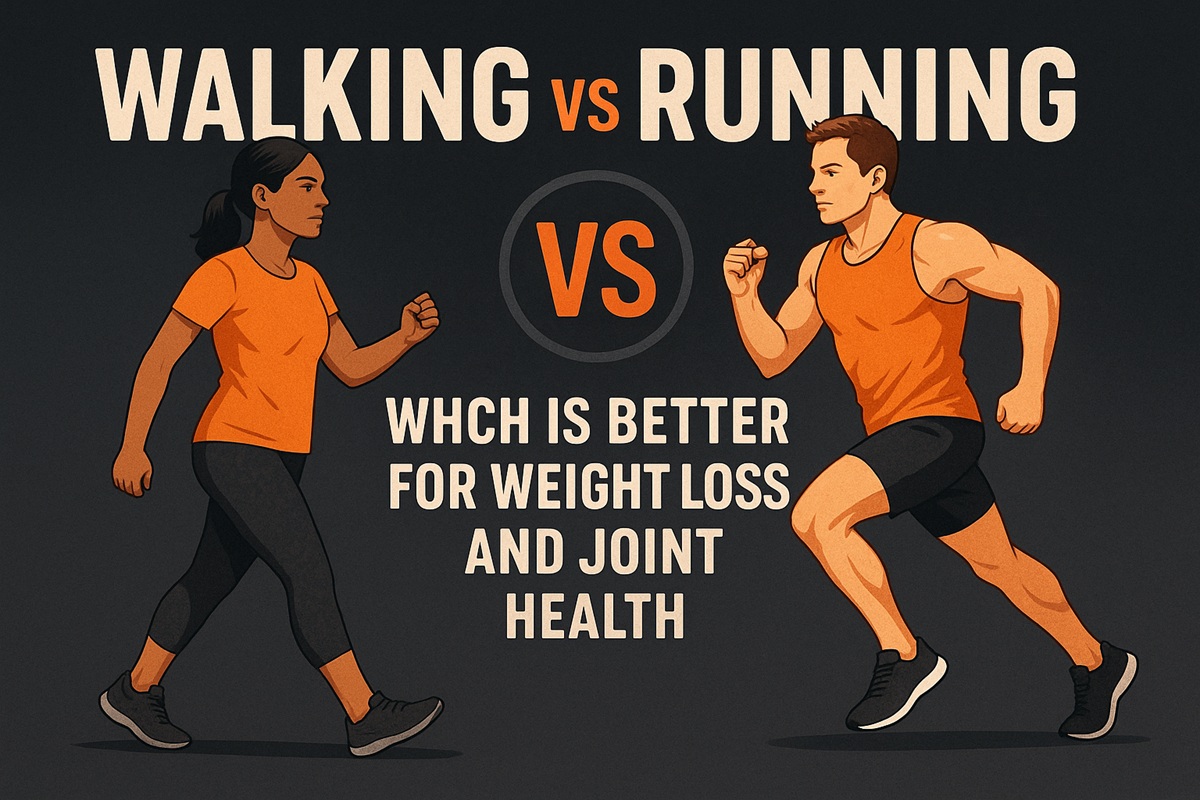Walking vs Running: Which Is Better for Weight Loss and Joint Health?

You’re standing at the edge of a new fitness goal, sneakers on, heart pumping with a mix of excitement and nerves. Should you head out for a steady walk or push yourself into a run? It’s not just about burning calories — it’s about finding something that fits your life and keeps your body happy. In this guide, we’ll compare walking vs running for weight loss and joint health, giving you clear, beginner-friendly answers to help you take that first step. Let’s get moving!
Why Compare Walking and Running?
Both walking and running are fantastic cardio for beginners. They’re simple, need no fancy gear, and can be done almost anywhere. But they differ when it comes to shedding pounds and protecting your joints. Imagine Sarah, a 35-year-old mom aiming to lose 15 pounds while keeping her knees from sounding like a rusty gate. Should she walk or run? Let’s break it down to find what works for her — and you.
Weight Loss: Burning Calories Head-to-Head
Weight loss is simple math: burn more calories than you eat. Both walking and running help, but their calorie-torching power varies by intensity and time.
- Running: The heavyweight champ of calorie burning. A 155-pound person running at 5 mph burns about 300 calories in 30 minutes. Crank it to 6 mph, and you’re hitting around 360 calories. Why? Running’s intense — your heart’s racing, muscles are firing, and you’re probably dripping sweat.
- Walking: It’s no slouch! That same 155-pound person walking briskly (3.5–4 mph) burns 150–180 calories in 30 minutes. It’s slower but sustainable, letting you go longer to rack up similar calories over, say, an hour.
Quick story: Sarah tries running for 20 minutes but feels like she’s been hit by a truck. She switches to a 45-minute brisk walk, burns nearly the same calories, and still has energy to spare. Lesson? Running’s faster, but walking can match it with more time.
Pro Tip for Weight Loss
Want to boost either? Try intervals. For walking, do 2 minutes fast, 1 minute slow. For running, alternate 1 minute sprinting with 2 minutes jogging. Intervals rev up your heart rate and keep calories burning post-workout — a bonus called the “afterburn effect.” (By the way, did you know your body might still burn calories while you’re chilling with a coffee? Pretty cool, right?)
Joint Health: Who’s Kinder to Your Body?
Your joints matter, especially if they’re already grumbling. The choice between walking and running can make a big difference.
- Walking: The low impact workout star. It’s gentle, putting about 1.5 times your body weight on knees, hips, and ankles. Perfect for beginners, especially if you’re carrying extra weight or have joint concerns. It’s like a cozy chat with your joints, not a wrestling match.
- Running: Tougher stuff. Each step hits your joints with 3–4 times your body weight. It can strengthen muscles around healthy joints over time, but for beginners or those with issues, it might lead to trouble. Picture Sarah thinking: “Running sounded fun until my knees started staging a protest.”
But running’s not all bad. Good shoes, soft surfaces (like grass or treadmills), and slow progression can ease the strain. Still, walking wins for joint-friendly vibes, especially early on.
So, Which Wins for Beginners?
Here’s a quick comparison table:
| Factor | Walking | Running |
|---|---|---|
| Calories Burned (30 min) | 150–180 (brisk pace) | 300–360 (moderate pace) |
| Joint Impact | Low (gentle) | High (tougher) |
| Beginner-Friendly? | Very (easy to start) | Moderate (needs build-up) |
| Time Commitment | Longer to see results | Faster results, shorter sessions |
For weight loss, running’s quicker if your body can handle it and you stay consistent. But walking’s a stellar low impact workout, easier to stick with — especially if you’re juggling work, kids, or a packed schedule.
How to Start: Practical Steps for Both
Ready to move? Here’s how to jump in without overdoing it:
Walking Plan for Beginners
- Start Slow: Aim for 20–30 minutes, 3–4 times a week, at a brisk pace (talking’s okay, singing’s tough).
- Gear Up: Grab comfy sneakers with solid arch support. No need for pricey brands — just happy feet.
- Mix It Up: Add hills or speed intervals for extra calorie burn. Try 5 minutes fast, 2 minutes slower.
- Track It: Use an app or jot down how you feel. Seeing progress is a mood-lifter!
Running Plan for Beginners
- Ease In: Start with a couch-to-5K plan. Try 1 minute running, 2 minutes walking, for 20 minutes, 3 times a week.
- Protect Your Joints: Get fitted for running shoes. Stick to grass or tracks when you can.
- Listen Up: Soreness is fine; pain’s a red flag. If joints complain, ease off.
- Build Up: Add 1–2 minutes of running per week, nice and slow.
Internal monologue moment: “Alright, I’ll walk today. Maybe I’ll jog next week. Or maybe I’ll just keep walking and call it a win.” That’s the spirit! No pressure — just progress.
The Final Verdict
So, what’s the better pick? If weight loss is your focus and your joints are game, running gets results faster — if you keep at it. If joint health or ease of starting is key, walking’s your go-to. It’s sustainable, gentle, and still gets the job done. The real champ? Whichever you’ll do regularly, even when life gets hectic.
Feeling stuck? Start with walking for a month, then try running if you’re up for it. Why not take a quick walk around the block today? You’re stronger than you think!